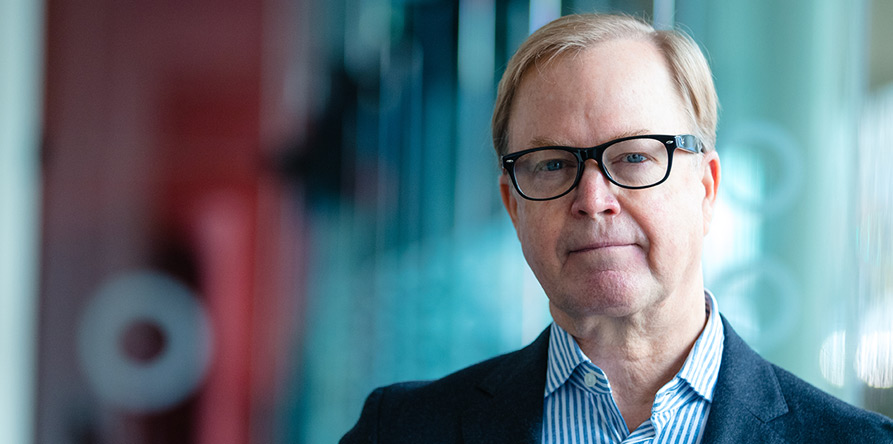
Navigating the investment landscape in a transformative era
Jurrien Timmer’s global macro view – October 28, 2024.
Investment strategies are constantly evolving in the face of market dynamics, geopolitical shifts and economic cycles. The recent FidelityConnects with Jurrien Timmer offered invaluable insights into the current and future state of investments, focusing on earnings expectations, election impacts, fiscal policies and liquidity in the markets.
Earnings and market cycles
A crucial aspect of investment strategies is understanding market cycles and earnings growth. As Jurrien explained, the current bull market started two years ago, with its first year driven by price and valuation, followed by a robust growth in earnings. However, investors need to be vigilant as the cycle matures. “At some point, the growth rate will peak before earnings actually peak.”
Companies consistently beating estimates have produced a strong signal for evaluating the markets health. Jurrien remarked, “Companies always beat, but how much they beat by is where the signal is.” For now, the market is at a stage where it’s crucial to monitor not just earnings growth but the breadth of market participation, an insight especially relevant given COVID-19's unique impact on market cycles.
The election impact
Election seasons have always had an impact on markets, presenting both volatility and opportunity. The recent U.S. election cycle has been no exception. But Jurrien asserts that the market largely transcends political outcomes: “The S&P has a market cap of $50 trillion, and the markets just transcend whatever happens in politics.”
A Harris win could lead to a divided Congress, which could lead to political gridlock – but at least it would be political gridlock that is somewhat familiar. On the other hand, a red wave would likely lead to significant fiscal expansions, tax cuts and regulatory changes that could favour small caps and drive up bond yields.
Jurrien also alluded to a less discussed possibility: gridlock under a Republican president without a House majority. This scenario, he suggested, could prevent significant legislative actions, ideally maintaining the status quo, but also introducing some uncertainty about fiscal policies. If Trump were to win and the House remains under Democratic control, then we would have a Republican president facing gridlock.
Fiscal policies and market liquidity
A lot of the talk lately has been about how government spending is going to be a big driver of this market.
The interplay of fiscal dominance and central bank policies also redefines liquidity scenarios in markets. Despite the U.S. Federal Reserve’s quantitative tightening, which ostensibly should shrink market liquidity, technical factors like the reverse repo program and Treasury cash balances have stabilized the situation. “The Fed shrunk its balance sheet by $1.9 trillion, yet the market didn’t crash,” Jurrien mentioned, emphasizing that various supportive mechanisms can sustain market liquidity even when central banks tighten monetary policies.
Expectations for future returns
Jurrien points out that secular bull markets tend to last 18 years, and we are only in the 15th year of the current bull market. He uses a CAPE ratio model that offers a robust lens for future outlooks. “The CAPE model suggests we are at the peak of the rate of change,” he remarked, predicting that in the years ahead we may continue seeing high returns, although a gradual reduction is to be expected.
Jurrien also highlighted the significance of managing client expectations, a critical task for financial advisors. “You harvest your gains while you can and just make sure you’re prepared for less stellar years,” Jurrien advised, underscoring the need for adaptive strategies based on evolving market conditions.
The labour market and inflation
The post-COVID recovery witnessed a unique alignment, with job openings matching labour supply without an increase in jobless claims. “The labour market is in perfect balance now,” Jurrien observed, providing a stable backdrop for economic activities and reducing inflationary pressures from wage hikes.
Final thoughts
As we navigate an intricate investment landscape shaped by evolving earnings, election outcomes, fiscal policies and market liquidity, it becomes evident that a keen understanding of these factors is essential. Reflecting on future expectations, Jurrien concluded, “I think we’re likely to get a liquidity wave in 2025, which is good for equities but means yields will probably rise,” and reminded investors to remain both optimistic and prudent in their approach.
Investing in today’s dynamic market requires continual learning and adaptation. As this discussion reveals, staying informed and responsive to macroeconomic indicators and market cycles can greatly enhance investment success.

